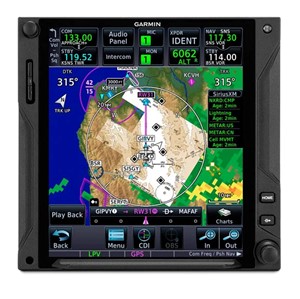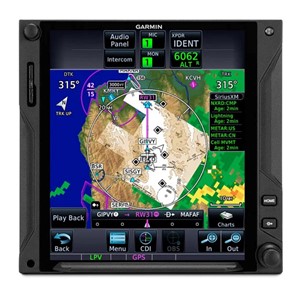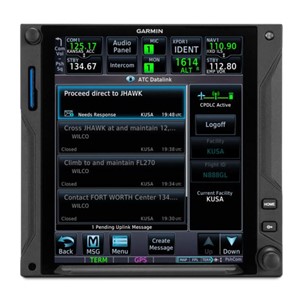Instead of relying on busy radio voice channels for all communication between flight crews and ATC, the FAA’s Data Comm program uses text-based datalink messaging to help streamline the interaction, reduce delays and avoid miscommunication errors.

Clearances via text link serve to simplify and streamline communications
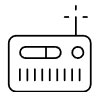
Datalinks with ATC help minimize the need for radio transmissions
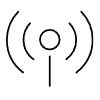
Get Data Comm Service at more than 60 U.S. airports and in most FAA enroute airspaces
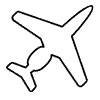
Data Comm is approved for select Garmin integrated flight decks and GTN 750Xi- or GTN 725Xi equipped aircraft
Easy And Efficient ATC Communications
Controller-pilot datalink communications, or CPDLC for short, are a big part of the FAA’s NextGen modernization program for America’s air transportation system. By complementing traditional voice transmissions with text messaging links, Data Comm services bring added efficiency, safety and clarity to today’s busy airspace environment. With clearance and reroute information sent directly to pilots in text format, Data Comm links serve to bypass radio chatter, minimize frequency congestion and help avoid the possibility of errors in clearance delivery or readback. This ultimately translates into smoother workflow and clearer communications for pilots and controllers.
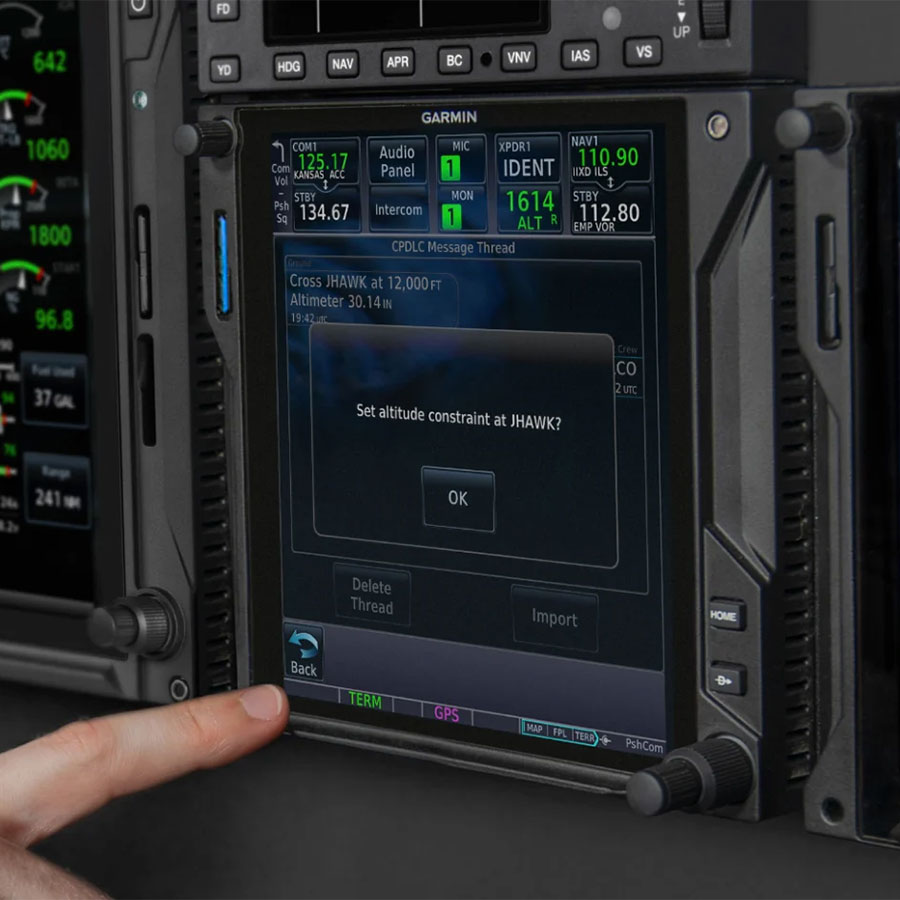
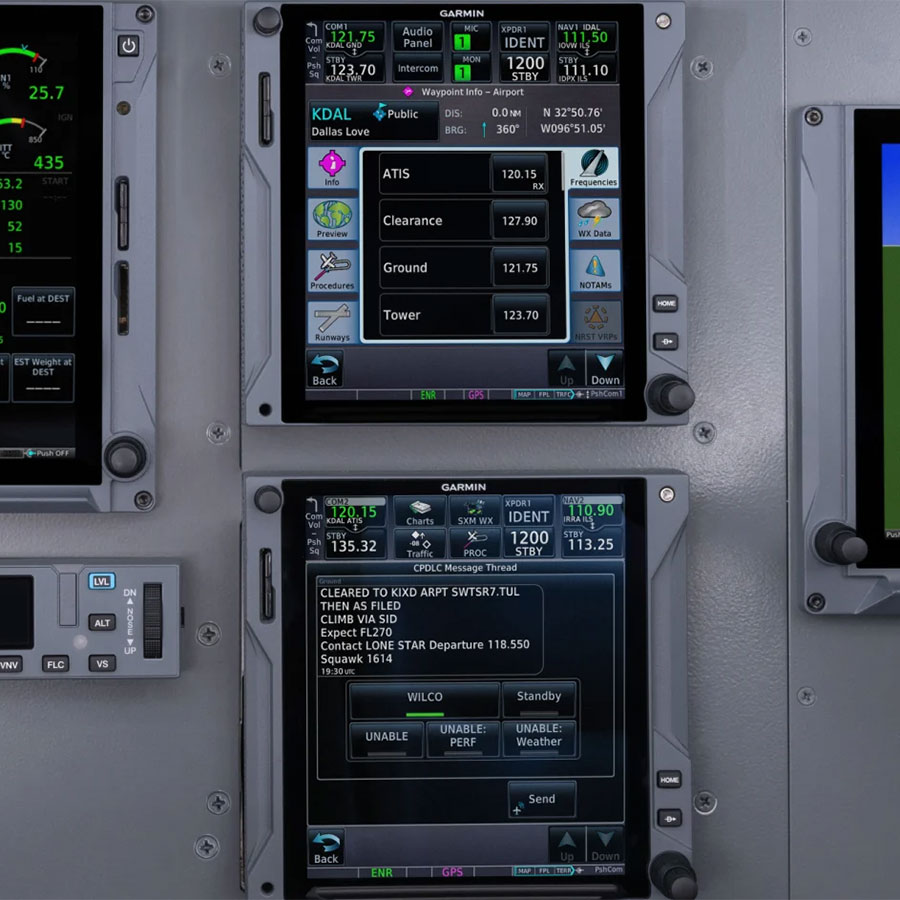
How Does The FAA Data Comm System Work?
When an aircraft is flying over areas of the United States with ground-based datalink coverage, the VHF ground stations serve as the primary communication link for Data Comm messaging. On oceanic flights where ground stations aren’t available, a satellite network becomes the primary mode. At select airports with CPDLC departure clearance capabilities, pilots can datalink their flight information to ATC from the cockpit, either upon departure or via pre-departure clearance services.
Controllers respond to pilot requests with route details, departure information and clearance approval — all by text message. The Data Comm link enables wireless receipt of these clearances, as well as the ability to automatically load the route of the departure clearance into the aircraft’s navigation system, when properly equipped.
Once airborne, enroute CPDLC services allow frequency information and clearance amendments to be sent by ATC for pilots to review and respond as appropriate. Pilots can also use the Data Comm link to contact ATC and make text-based requests for such things as direct-to routing amendments, altitude and heading changes, or any clearance deviation required for weather or traffic.
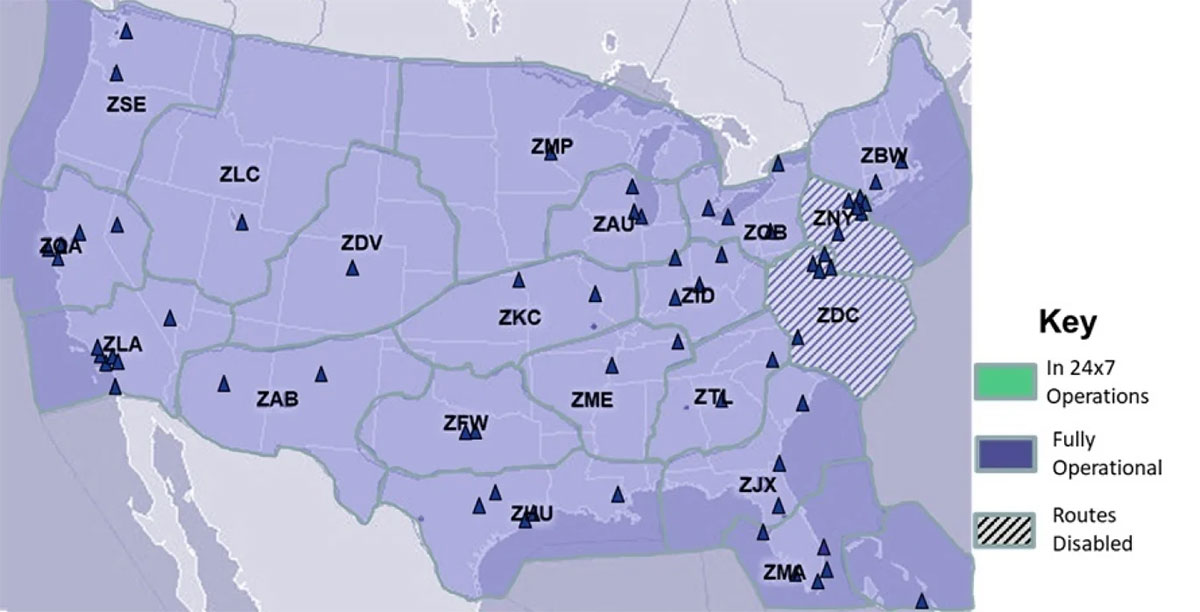
Is Data Comm Widely Available?
Yes. And the network continues to grow. Currently, datalink departure clearance operations are available at more than 60 airports in the U.S., and all FAA air route traffic control centers (ARTCC) are Data Comm capable for enroute link services to aircraft flying above 16,000 feet. At airports where direct-link CPDLC service is unavailable, Garmin FltPlan pre-departure clearance (PDC) service can send your clearance via text message (SMS) or email to a portable device, such as your cellphone or tablet, for easy access in the cockpit. A PDC is the same as receiving a verbal IFR clearance from ATC. PDCs are included in the FAA Data Comm subscription at no additional charge.
What You’ll Need To Access FAA Data Comm:

HARDWARE
Data Comm is approved for select Garmin integrated flight deck, GTN 725Xi, and GTN 750Xi installations

ENABLEMENT
Users will need an FAA Data Comm enablement for their avionics

SUBSCRIPTION
Garmin offers a $499 annual subscription to access the FAA Data Comm service
Examples Of FAA Data Comm Messages:

Departure
Initial IFR departure clearances can be received on the ground at over 60 DCL-capable U.S. airports.
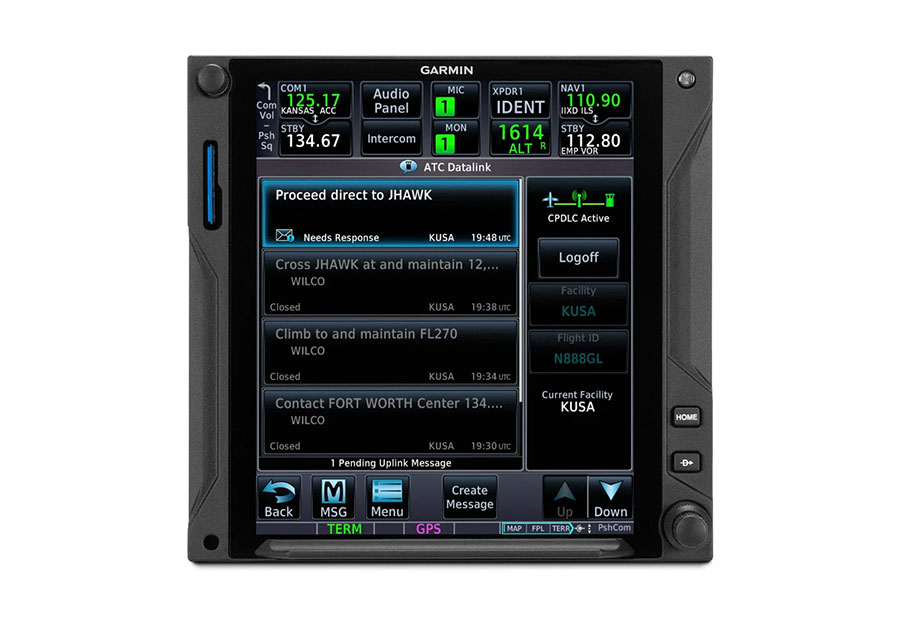
Enroute
ATC can text enroute clearances in most U.S. ARTCC regions to assign changes in routing, frequencies, altitudes, etc.

Pilot Requests
Pilots can use Data Comm links to request deviations for weather, direct-to routings, altitude changes or other ATC flight plan amendments.
- GDR 66, Unit Only
- Sub-Assy, Conn Kit, GDR 66
- Sub-Assy, Install Rack, GDR 66


